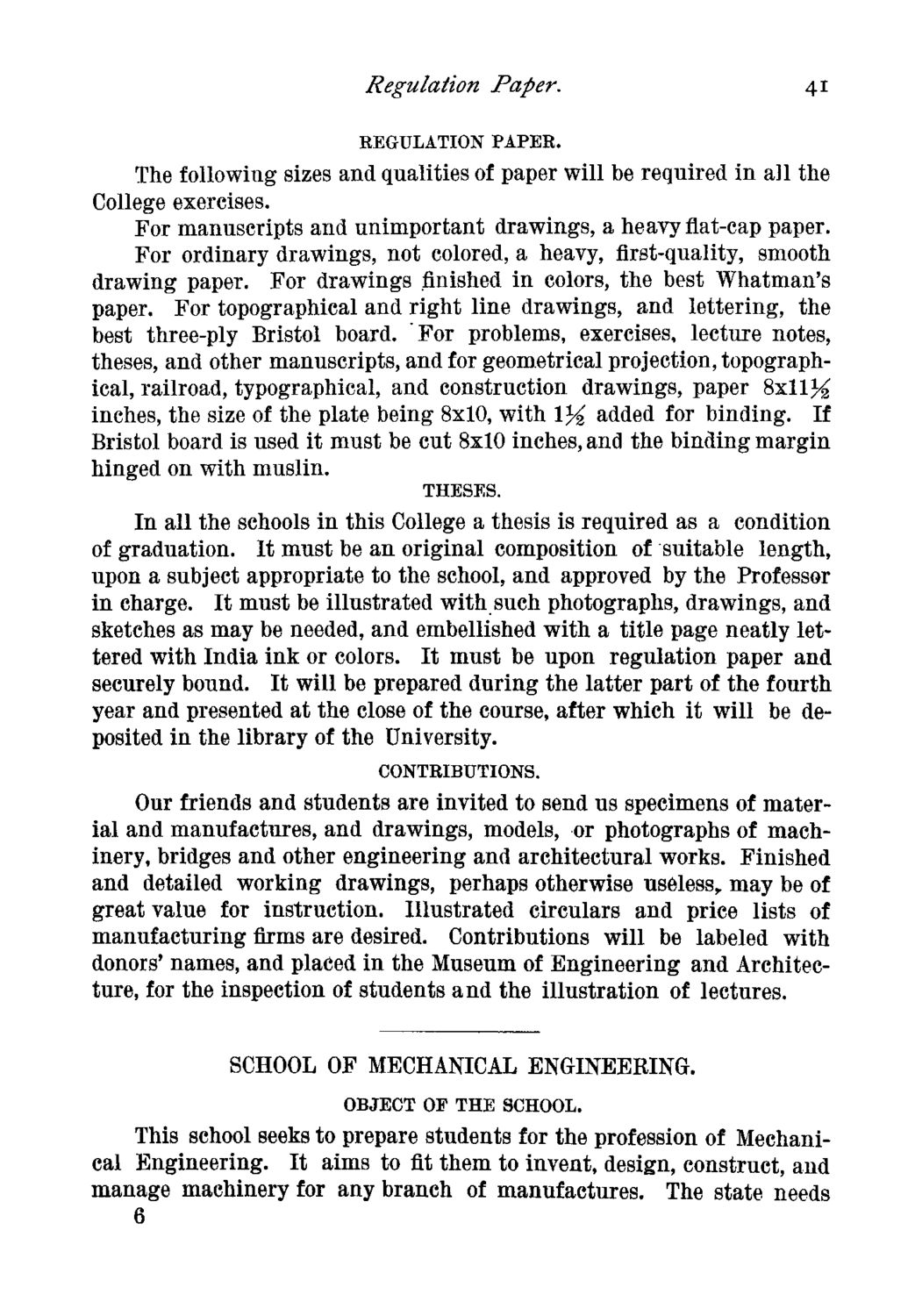| |
| |
Caption: Course Catalog - 1882-1883
This is a reduced-resolution page image for fast online browsing.

EXTRACTED TEXT FROM PAGE:
Regulation Paper. REGULATION PAPER. 41 The following sizes and qualities of paper will be required in all the College exercises. For manuscripts and unimportant drawings, a heavy flat-cap paper. For ordinary drawings, not colored, a heavy, first-quality, smooth drawing paper. For drawings finished in colors, the best Whatman's paper. For topographical and right line drawings, and lettering, the best three-ply Bristol board. For problems, exercises, lecture notes, theses, and other manuscripts, and for geometrical projection, topographical, railroad, typographical, and construction drawings, paper 8x11% inches, the size of the plate being 8x10, with \% added for binding. If Bristol board is used it must be cut 8x10 inches, and the binding margin hinged on with muslin. THESES. In all the schools in this College a thesis is required as a condition of graduation. It must be an original composition of suitable length, upon a subject appropriate to the school, and approved by the Professor in charge. It must be illustrated with such photographs, drawings, and sketches as may be needed, and embellished with a title page neatly lettered with India ink or colors. It must be upon regulation paper and securely bound. It will be prepared during the latter part of the fourth year and presented at the close of the course, after which it will be deposited in the library of the University. CONTRIBUTIONS. Our friends and students are invited to send us specimens of material and manufactures, and drawings, models, or photographs of machinery, bridges and other engineering and architectural works. Finished and detailed working drawings, perhaps otherwise useless, may be of great value for instruction. Illustrated circulars and price lists of manufacturing firms are desired. Contributions will be labeled with donors' names, and placed in the Museum of Engineering and Architecture, for the inspection of students and the illustration of lectures. SCHOOL OF MECHANICAL ENGINEERING. OBJECT OF THE SCHOOL. This school seeks to prepare students for the profession of Mechanical Engineering. It aims to fit them to invent, design, construct, and manage machinery for any branch of manufactures. The state needs 6
| |